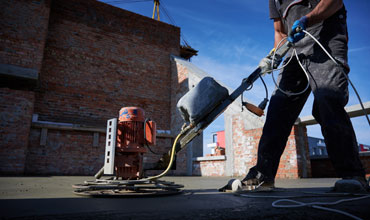
Due to its adaptability and level, smooth surface finish, screed flooring is utilised in numerous commercial and industrial facilities (including offices, warehouses, and schools) worldwide. However, installing screed flooring may be challenging, and failing to take the proper precautions can result in problems like curling and cracking.
Over years of expertise supporting commercial and residential projects across the UK, West London Concrete is an expert in commercial concrete and screed flooring. As a result, we are in a suitable state to explain how to avoid screed curling and cracking. Learn more about us and how you can rely on us to design and install your screed floor by reading on.
Cracks can develop on your screed floor because of shrinkage when it naturally dries. The screed may also break if there is excessive water present since an oversaturated screed will shrink excessively and develop more cracks.
When moisture from the top portion of the surface evaporates, the screed will ‘curl’ meaning it will shrink and dry more quickly than the bottom portions. The screed ends up curling upward as a result.
To avoid your screed cracking or curling, we suggest taking the following into account:
To avoid cracking or curling, a screed mix's cement and water proportions must be just correct. If your screed is mixed with too much or too little cement or water, it may not develop the necessary strength and is more likely to crack or curl.
We suggest completing a BRE Drop Hammer test to see if your screed is sturdy enough to handle weight-bearing loads and foot traffic. This test involves dropping a hammer into the screed and measuring the resulting indentation.
It has been discovered that unbonded or floating screeds are more likely to curl and crack at the joints. We advise adding and strengthening steel mesh at the middle depth of the screed to relieve stress and lower the risk.
Additionally, we advise selecting the thickest screed that is practical for your project. This is because thinner unbonded screeds are more prone to experience curling than thicker ones are, as the latter are better able to withstand the forces of curling.
Curing is a technique for keeping water in the screed for a while (often seven days) to stop the screed from drying out too rapidly and stop excessive moisture from the surface from evaporating.
This can be accomplished by applying a polythene layer. However, curing is no longer a common technique due to the environmental, health, and safety concerns associated with utilising such material.
Before installing your moisture-sensitive floor, you should let the last drop of the water from your screed drain away. Even though it could take a while, it's crucial to avoid forced drying as this is a primary contributor to excessive drying shrinkage, resulting in cracking and curling.
A modified rapid drying screed, intended to dry in a more controlled, speedier manner while preventing curling or cracking, is advised if you are working on a time-sensitive project. The elimination of the polythene curing process is another advantage of these screeds.
For further details get in touch with West London Concrete and speak to us!